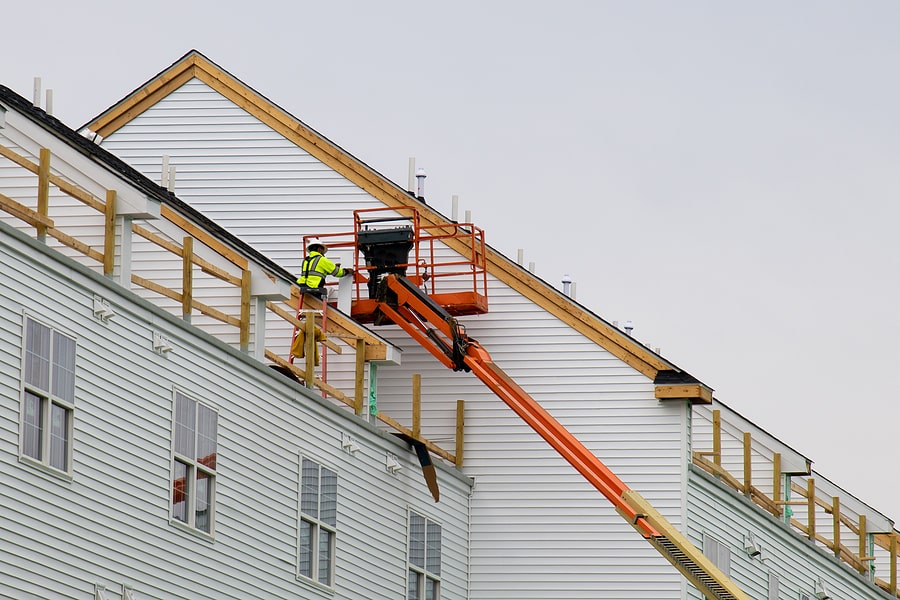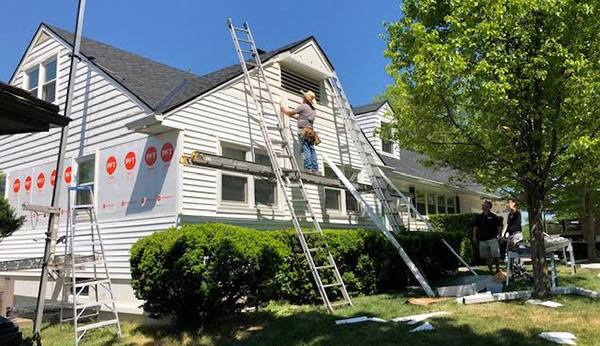Revealing the Importance of Picking the Right Exterior Sidings for Long-Term Resilience
When it comes to the architectural stability and aesthetic charm of a building, the selection of exterior siding plays a crucial function. The durability of house siding materials can significantly affect the longevity and overall maintenance expenses of a home. However, the large variety of home siding options offered in the market can make the decision-making procedure daunting. Comprehending the essential elements that affect the resilience of outside house sidings is vital for making educated choices that can stand the test of time. By untangling the complexities surrounding this choice, a more clear course towards long-lasting and sustainable home siding remedies emerges.
Elements Influencing Siding Sturdiness
Taking a look at the installment procedure is vital in establishing the variables affecting house siding longevity. Correct installment plays a substantial function in making sure the durability and performance of exterior house sidings. Factors such as the usage of top quality products, knowledgeable labor, and adherence to supplier standards during installation are essential for making the most of the resilience of sidings.
The sort of product utilized for exterior sidings is a primary variable influencing their resilience. Products like plastic, fiber timber, metal, and concrete have different degrees of resilience and call for certain maintenance techniques. Furthermore, exposure to ecological elements such as sunshine, moisture, and severe temperatures can influence the longevity of house sidings.
In addition, the quality of installment straight affects the longevity of exterior sidings. Incorrect installment can result in problems like bending, cracking, or water infiltration, endangering the architectural integrity of the home sidings. Working with experienced experts and complying with correct setup procedures are critical steps in guaranteeing the toughness of outside house sidings.
Impact of Weather
Climate condition substantially affect the efficiency and long life of outside house sidings. Exposure to various weather elements such as rain, snow, hail, UV rays, and varying temperatures can affect the toughness of house sidings with time. For circumstances, consistent direct exposure to dampness from rainfall or snow can cause water seepage, triggering mildew, mold and mildew, or rot development in home sidings made from materials like wood or fiber cement. Intense sunlight and UV rays can discolor the color and degrade the finish of house sidings made from vinyl or light weight aluminum. Icing up temperatures adhered to by defrosting can result in development and tightening of exterior sidings, leading to splits or warping.
Picking the best house siding material that can hold up against the particular climate condition of a region is critical for long-lasting longevity. For areas susceptible to hefty rainfall, materials like plastic or fiber cement that provide excellent moisture resistance may be preferable - vinyl siding companies near me. In regions with extreme temperature level variants, durable materials like crafted timber or steel sidings might be a far better selection. Understanding the effect of weather condition problems on outside sidings is vital in making notified choices to make certain the longevity and performance of the exterior siding financial investment.
Power Performance Factors To Consider
Offered the considerable function weather play in identifying the resilience of exterior sidings, it is essential to also consider the power effectiveness ramifications when selecting one of the most ideal home siding material for a residential or commercial property. Energy performance is a critical aspect to consider as it directly Learn More influences a residential property's cooling and heating prices. Choosing energy-efficient siding products can contribute to keeping a comfortable indoor temperature level throughout the year while potentially lowering energy bills. Products such as insulated plastic, fiber cement, and crafted wood house sidings use enhanced power efficiency by giving much better insulation for the property. These products help in stopping heat transfer, maintaining the interior cooler in the summer season and warmer in the winter season, which lessens the tons on home heating and cooling systems. In addition, energy-efficient sidings can likewise add to a much more lasting and environmentally pleasant property by minimizing total energy usage. When determining on exterior sidings, considering their energy effectiveness can lead to lasting price savings and a more ecologically mindful selection for the property.
Upkeep Demands and Costs

Plastic exterior siding generally has lower maintenance expenses compared to wood or fiber concrete house siding, as it does not require frequent painting or discoloration. It is crucial to factor in long-lasting maintenance expenses when originally picking a siding material to guarantee that the general life time costs straighten with your spending plan.
Long Life and Return on Investment
Comprehending the longevity of various exterior house siding materials is crucial for building owners looking to optimize their return on financial investment. Selecting a home siding material with a lengthy lifespan can substantially impact the total cost-effectiveness of a home.
In terms of return on financial investment, house siding products that offer longevity can click to investigate enhance the value of a residential property. By taking into consideration the long life of outside house siding products, property owners can make enlightened choices that profit them in the lengthy run.
Verdict

The longevity of siding materials can considerably affect the durability and general upkeep expenses of a residential property. Recognizing the influence of climate problems on outside house sidings is essential in making informed choices to ensure the longevity and efficiency of the house siding financial investment.
Offered the substantial duty weather conditions play in identifying the toughness of exterior house sidings, it is essential to likewise consider the energy efficiency effects when picking the click for info most appropriate exterior siding material for a residential or commercial property. Vinyl siding commonly has reduced maintenance costs contrasted to timber or fiber cement siding, as it does not call for regular painting or discoloration. By very carefully considering these factors and picking the ideal material, property proprietors can take full advantage of the resilience and return on financial investment of their exterior siding.